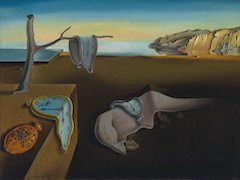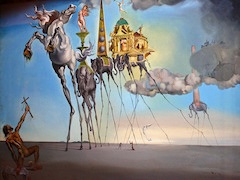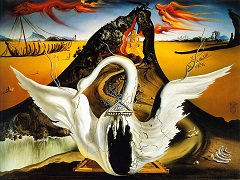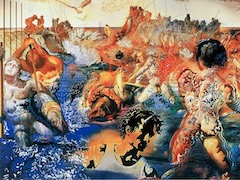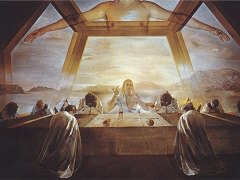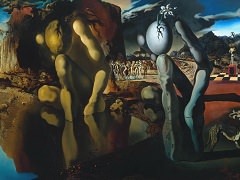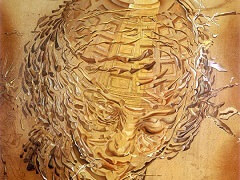Slave Market with the Disappearing Bust of Voltaire, 1940 by Salvador Dali
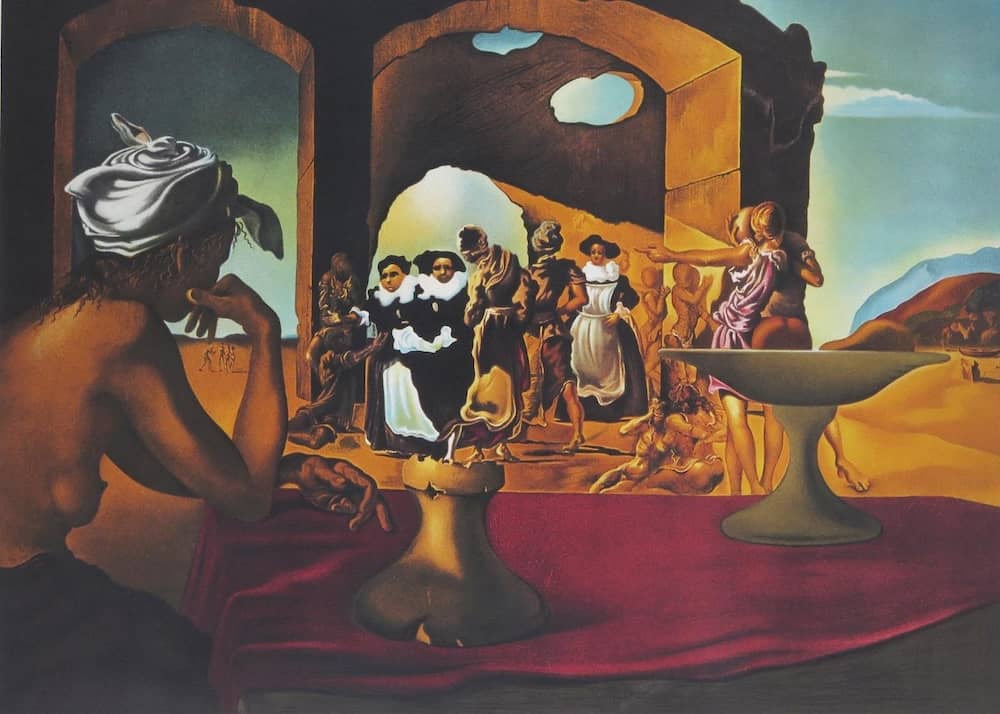
This work is one of Dali's most effective double image paintings. Without the slightest change in the details, the composition flips back and forth between two contradictory yet fully developed images.
Dali was fascinated all his life with optical illusion, inspired in part by viewing the works of Arcimboldo of the 16th century. Visual puns and hidden images struck a chord with Dali, and his masterly painting technique allowed him to execute this visual phenomenon with razor-sharp precision.
On the left, Dali's wife Gala leans on a red velvet tablecloth, gazing at a sculpted bust of the French philosopher Voltaire. Before her very eyes (and ours), Voltaire's face dissolves into a group of figures. Looking closely, one can see a couple dressed in old-fashioned clothing with large white collars. They are merchants standing in a slave market, and their figures create the illusion of a sculpture of Voltaire's head and shoulders.
Dali was fascinated all his life with optical illusion, inspired in part by viewing the works of Arcimboldo of the 16th century. Visual puns and hidden images struck a chord with Dali, and his masterly painting technique allowed him to execute this visual phenomenon with razor-sharp precision.

